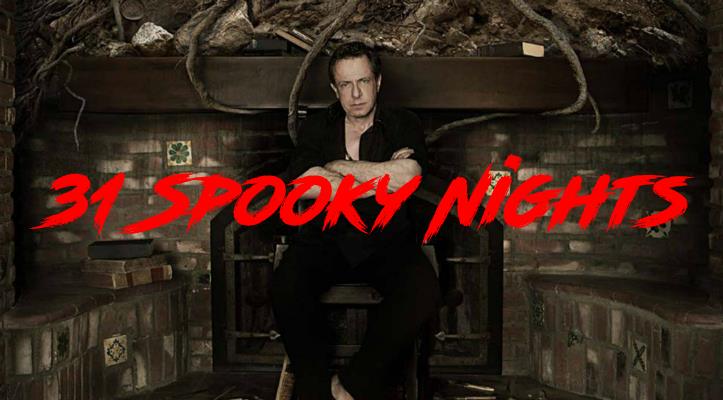
This instalment is going to be a little different, since we’re reviewing three movies instead of just one. It was just too tough to pick which film we wanted to watch tonight and instead went for the Clive Barker triple feature: Hellraiser, Hellraiser II, and Candyman.
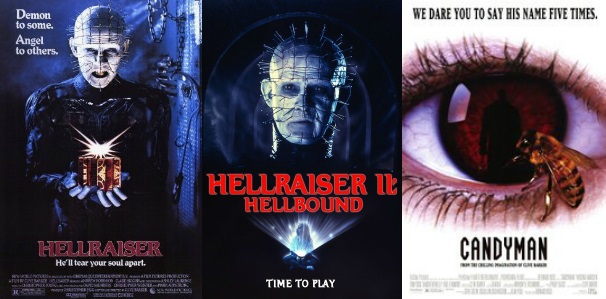
Hellraiser: Clive Barker’s feature directing debut graphically depicts the tale of a man and wife who move into an old house and discover a hideous creature – the man’s half-brother, who is also the woman’s former lover – hiding upstairs. Having lost his earthly body to a trio of sadomasochistic demons, the Cenobites, he is brought back into existence by a drop of blood on the floor. He soon forces his former mistress to bring him his necessary human sacrifices to complete his body… but the Cenobites won’t be happy about this.
Hellraiser 2: Doctor Channard is sent a new patient, a girl warning of the terrible creatures that have destroyed her family: Cenobites, who offer the most intense sensations of pleasure and pain. But Channard has been searching for the doorway to Hell for years, and Kirsty must follow him in to save her father and stop the good doctor from claiming hundreds of souls.
Candyman: Helen Lyle is a student who is writing a thesis about local legends and myths. She visits the bad part of the town because of the legend of the Candyman, a one-armed man who appears when you say his name five times. Helen doesn’t believe all this stuff, but the people of the area are truly afraid. When she ignores their warnings and begins her investigation in the places that he is rumored to appear, a series of horrible murders begins. Could the legend be true?
Billy: Hellraiser was made at just the right time to work as well as it does. The practical special effects of eighties horror were at their peak, and Clive Barker’s ability to control tone to constantly put you on the edge of your seat as the story pushes forward sets up a dark and horrific film. There are moments you won’t be able to look at the screen during this film and others where you’ll be transfixed. It’s that good and that visceral. I’ve never understood human anatomy as meat more than when I watched this film.
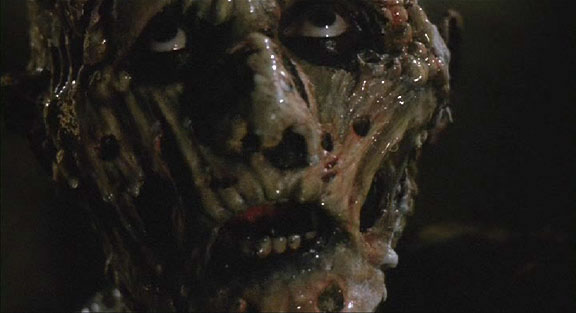
This film glorifies sex. Setting up Larry as weak, not even being able to look at blood, Frank is the alpha male who corrupts Julia with sex scenes that are just good, hot, sweaty sex. The disgusting creature that emerges from the blood disgusts you just as much as other areas of the film turn you on. You feel Julia’s conflict as she falls to the darkness. There’s a Lady MacBeth quality to her acting. Hesitant at first, she becomes just as twisted and indulgent as Frank, and it’s that whole slow descent that is the point of this film. As much as we view Kirsty as the protagonist of this film, she’s really just an outsider coming in at the wrong time.
Amelia: I watched Hellraiser on the eve of my eleventh birthday. And not illicitly. My mother took me to Blockbuster and let me choose whatever I wanted for the sleepover I was throwing. That’s some great parenting there, amrite? Anyways, it was my first exposure to Clive Barker. His movies and books have been something of an obsession of mine ever since.

There’s literally nothing in Hellraiser that should have been shown to four eleven year old girls and it wasn’t until much later in life that the story beyond blood, blood, and more blood sunk in. Hellraiser is a blood soaked jaunt through disturbing sexual desires and body horror. Clive Barker’s style is a unique one and it’s hard not to exhibit his most prominent themes in the movies based on his writing. So yeah, there’s a lot of sex here. Many giggles were giggled the night I watched this with my friends. I don’t giggle nowadays. It’s more of an uncomfortable squirm as I try to sort through my feelings without giving way to any compromising Freudian slips.
Billy: There’s a different kind of lust going on in the sequel. The sadomasochistic themes are expanded upon even further with with a story centred around a psychiatric doctor abusing the power. Julia has come full circle in her corruption during Hellraiser and wholly become the monster, thriving by way of Dr. Channard’s abuse. Those scenes of her blood-drenched naked body invading the apartment’s perfectly clean white space are brilliant and emphasize how inhuman she truly is. She ends up manipulating everyone in the film, Channard included.

Helpless Kirsty is even farther down the rabbit hole, a patient at the mercy of monsters and abusers. A huge portion of this film is dedicated to her trying to get her father out of hell, but what she finds there instead finds her even more a pawn than the first film implied. At no point is she ever corrupted or tempted, her pure soul surviving the power she’s given when she takes on Julia’s skin.
The revelation that all the cenobites were once human, that we are all corruptible, makes the mythos of the film all the more terrifying. There’s an almost Lovecraftian escalation of scale in this film as we actually go to Hell. It’s perfect. Hell should be intimidating, dark, and unfathomable.
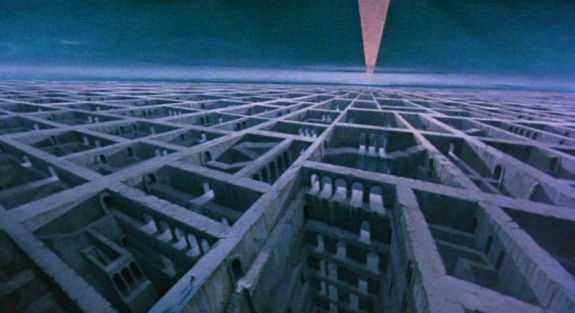
Amelia: The very first movie in this series was the last of the franchise to have any direct contact with Clive Barker. Which is ridiculous because we’re on what nowadays? Movie ten? Anyways, Hellraiser 2 came out a year after the first movie, but Clive Barker’s only credit is the original story. The movie still feels mostly the same as the first one, but at the same time, it’s different without Barker directly there. Probably the biggest thing to point out is that this is the film that turned this original, one-off, horror idea into a Hollywood cash cow. Even now, the studio that owns the rights to Hellraiser are shitting out horrible movies under the title just to keep the rights. Apparently the money it brings in is enough to justify this deplorable occurrence.
Hellraiser 2 is a great movie. Though I do roll my eyes at the design they gave to the doctor once he becomes a Cenobite. What’s with that stupid tapeworm thing that carries him around? Anyways, besides that abomination, the sequel holds up. Not a lot of sequels can claim to be as strong as the first, but the second one is for the most part. It’s a finishing of Kirsty’s story, some closure to the events she endured. It also expands the Cenobites’ universe, giving us a glimpse of Hell and the humans that these BDSM demons were before they were corrupted. And while I really love seeing this universe building, this is what opened the series up into the franchise it is today; which is to say a series of diminishing returns as a studio struggles to keep the rights instead of making art.

Billy: Then there’s Clive Barker’s third film on our triple-feature. The best Bloody Mary movie you will ever see. Candyman is still about sex, but far less overtly. The consequences of motherhood and children, the pain of infidelity. Helen and her cheating husband are an emotional core of the arc. Even if it isn’t wholly important for the plot that it remain, it’s vital for us to feel empathy with Helen and understand her loss and slipping sanity.
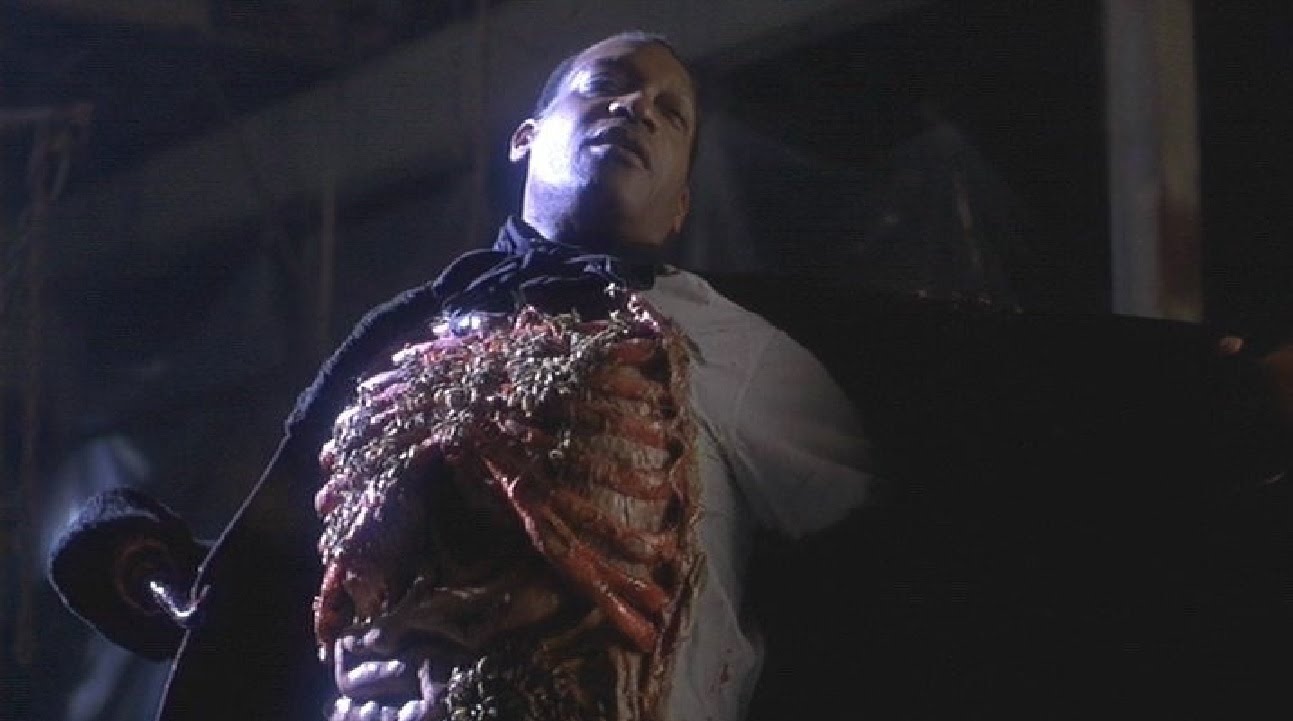
Tony Todd is the ultimate villain. Just that presence, that voice, are the ultimate expressions of evil on screen. There’s a pathos to the Candyman’s backstory, but it’s only told through the telling of stories or depiction in murals on decrepit walls. It goes perfectly with the modern folklore subject matter that the film sets you up for over and over again. While Candyman has a history, Tony Todd’s depiction doesn’t. He only ever plays the monster, and you feel that intimidation as soon as he speaks or steps on screen.
Racial tension and a history of slavery round out this film, making it feel far more complete and grandiose than either of the Hellraiser movies we watched. It’s impossible to understand how the film would work without those factors, especially since they were wholly absent from Clive Barker’s original vision of the story. These are themes that honestly make the film feel like it could be made in 2016, especially the final defiant march. The score composed by Philip Glass for this film adds to a sense of importance. Every note of the orchestral score permeates the scenes to elevate them even further. Even though it delves far less into the supernatural, there are still iconic images to be had. Helen without her hair, still human and ghostly pale, is something I always think is amazing when I get to the end of this film.
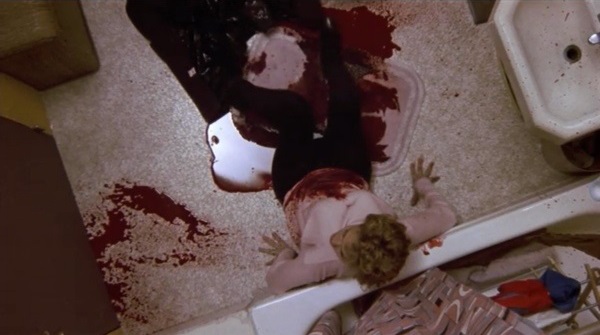
Amelia: Candyman was filmed in Chicago at the Cabrini–Green Homes. That’s right in the middle of gangland. The production crew actually had a deal to feature gang members in the movie for protection while they filmed there. That’s so intense! Talk about creating tone right off the starting line. The director has been quoted saying the setting was: “…an incredible arena for a horror movie because it was a place of such palpable fear.” I always thought it was a very bold move to take Clive Barker’s story about British classism and turn it into a movie about American racism, but it absolutely works. Probably better than the original story The Forbidden does.
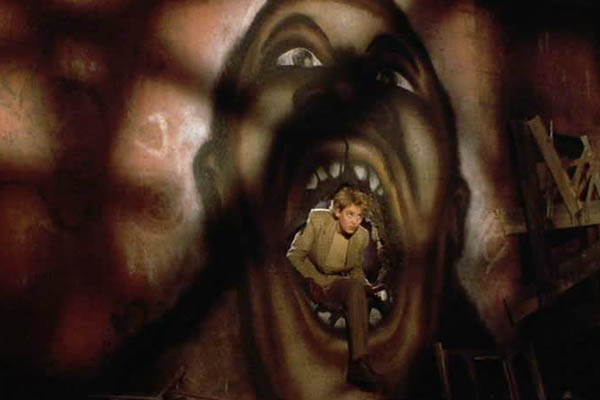
Speaking of the original story, I have to talk about Clive Barker’s extraordinary talent for ending things on an unhappy note without you really feeling like you were jipped or short changed in the story. The short story that this film is based on came from his Books of Blood collection. Having read every single one of them, I don’t think any had what you would call a ‘happy ending’. And while he didn’t write the screenplay for Candyman, it still feels true to the story he originally told. Not having a hand in the writing makes it all the more impressive that his tone was captured so precisely. Hats off to writer/director Bernard Rose everyone. The man deserves it.
Spooky Verdict
Billy:
Seven puzzle boxes out of ten for Hellraiser










Seven puzzle boxes out of ten for Hellraiser II










Nine bees out of ten for Candyman










Clive Barker is definitely one of the definitive kings of horror. The original Hellraiser mythology is one of the best depictions of Hell ever made. And, as a rarity in horror, the sequel actually holds up. I compare it to Nightmare on Elm Street 3: Dream Warriors in terms of escalating the scale while retaining quality. And Candyman? Candyman is a severely underrated gem. Definitely a contender for best horror film of the 90s. There’s a twisted and depraved quality to Clive Barker, with sex and violence intertwined entirely. It took me way too long to actually getting around to seeing any of these movies. Don’t miss out if you haven’t watched them yet.
Amelia:
Seven and a half puzzle boxes out of ten for Hellraiser










Six and a half puzzle boxes out of ten for Hellraiser 2










Six and a half bees out of ten for Candyman










The first two Hellraiser movies will always hold a special place in my heart. I love the mythology, I love the visuals, I love the gore intertwined with the sex. I’m not as crazy about Candyman as I am Hellraiser, but the respect I have for it is immense. The tone and atmosphere of Candyman always leaves me feeling like I’ve just walked through an ethereal dream reality. The tension in Hellraiser comes from the horror of monsters and human appetites for more and more no matter what. The tension in Candyman comes from an inability to pinpoint exactly what you’re supposed to be feeling at any one moment. What a brilliant way to tell a scary story.
Clive Barker’s ideas come from insanity and I love the bloody madman for sharing them with me!


![[REVIEW] THE WORLD’S SECOND BEST LAWYER RETURNS IN ‘BETTER CALL SAUL SEASON 6, EPISODES 1 – 3](https://geekd-out.com/wp-content/uploads/2022/04/Better-Call-Saul-Season-6-Release-Date-150x150.webp)
![[REVIEW] ROAD TO ENDGAME: ANT-MAN AND THE WASP (2018)](https://geekd-out.com/wp-content/uploads/2019/04/AntManWaspFeature-150x150.jpg)
![[PODCAST] THE COMICS AGENDA: A WEDDING, A SWORD FIGHT, AND A FEW DEATHS](https://geekd-out.com/wp-content/uploads/2017/11/comics-agenda-2-150x150.jpg)
One thought on “31 Spooky Nights: Clive Barker Triple Feature”